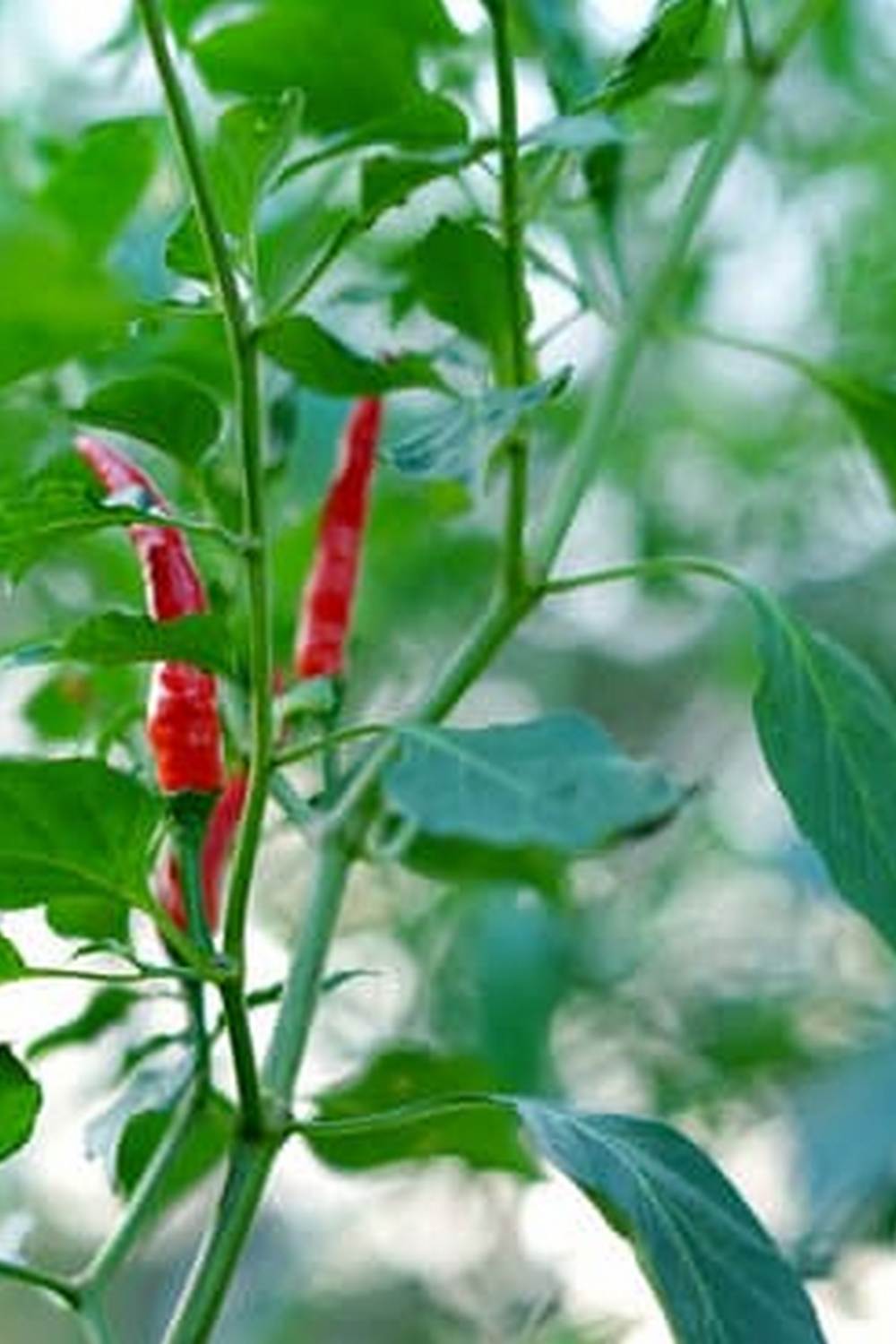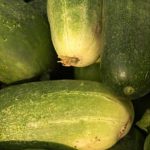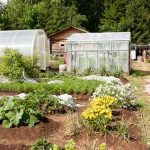Are you considering starting your own vegetable and fruits gardening? The benefits and joys of growing your own produce at home are numerous, and this introductory section will provide an overview of what you can expect. From choosing the right location for your garden to selecting the best fruits and vegetables for your climate, this article aims to guide you through the process of cultivating a thriving garden.
One of the most rewarding aspects of vegetable and fruit gardening is being able to enjoy fresh, organic produce right from your backyard. Whether it’s crisp lettuce, juicy tomatoes, or sweet strawberries, there’s nothing quite like biting into a piece of fruit or vegetable that you’ve grown yourself. Not only does it provide a sense of fulfillment and accomplishment, but it also ensures that you have access to nutritious and flavorful ingredients all year round.
In addition to the satisfaction of cultivating your own food, vegetable and fruit gardening also offers a range of health benefits. Engaging in outdoor activities such as planting, watering, and harvesting can be a great way to stay active and reduce stress levels.
Additionally, consuming homegrown fruits and vegetables provides an array of essential vitamins, minerals, and antioxidants that can contribute to overall wellbeing. Stay tuned as we delve into the specifics of establishing a successful vegetable and fruit garden in the following sections.
Choosing the Right Location for Your Garden
The success of your vegetable and fruits gardening largely depends on choosing the right location for your garden. A sunny spot is crucial for most fruit and vegetable plants as they require at least 6-8 hours of direct sunlight per day. When selecting a location, take note of any nearby buildings or trees that may cast shadows on your garden during different times of the day.
Additionally, be mindful of potential obstructions that could block sunlight, such as fences or walls. By prioritizing sunlight, you are ensuring that your plants receive the necessary energy to grow and produce a bountiful harvest.
In addition to sunlight, soil quality is another essential factor to consider when choosing a location for your garden. Testing the pH level and nutrient content of your soil can help determine if it’s suitable for growing fruits and vegetables.
Some plants thrive in acidic soil while others prefer alkaline conditions, so knowing the composition of your soil is key in selecting the right crops for your garden. If necessary, amendments such as compost or fertilizer can be added to improve soil quality and ensure optimal growth.
Furthermore, adequate space is crucial when deciding where to plant your fruits and vegetables. Consider the size and growth habits of each plant when determining spacing requirements.
Some plants like tomatoes and peppers require ample room between each other to prevent overcrowding and promote air circulation, while others like lettuce or herbs can be planted closer together. Proper spacing not only allows individual plants to thrive but also assists in managing pests and diseases by reducing favorable conditions for their spread.
Ultimately, selecting an ideal location with abundant sunlight, suitable soil quality, and sufficient space lays a strong foundation for successful vegetable and fruits gardening. Taking these factors into consideration will set you on the path to enjoying a thriving garden full of delicious homegrown produce.
Selecting the Best Fruits and Vegetables for Your Climate
When it comes to vegetable and fruits gardening, selecting the best types of plants for your climate is crucial to ensuring a successful harvest. Different fruits and vegetables thrive under different climate conditions, so it’s important to choose varieties that are well-suited to your local weather patterns. By understanding the needs of various plants and matching them with your specific climate, you can set yourself up for a bountiful garden.
Understanding Your Climate
Before choosing which fruits and vegetables to plant in your garden, it’s important to have a good understanding of your local climate. Consider factors such as average temperature, humidity levels, and the length of growing seasons in your area. Some plants prefer cooler temperatures with plenty of moisture, while others thrive in hot, dry climates. By knowing the specific conditions of your climate, you can narrow down the options for what will grow best in your garden.
Choosing Suitable Varieties
Once you have an understanding of your local climate, research which varieties of fruits and vegetables are best suited to those conditions. For example, if you live in a region with short summers and cool nights, look for tomato varieties that have shorter maturation times or are bred specifically for cooler climates. Likewise, if you live in a hot and humid area, seek out heat-tolerant lettuce or eggplant varieties that can withstand these conditions.
Consider Microclimates
In addition to understanding the general climate of your region, consider any microclimates within your garden space. Certain areas may be more prone to receiving more sunlight or retaining more water than others due to factors such as nearby buildings or trees. Take advantage of these microclimates by planting fruits and vegetables that benefit from these specific conditions.
By carefully selecting fruits and vegetables that are well-suited for your particular climate and microclimates within your garden space, you can set yourself up for a successful vegetable and fruits gardening experience with a fruitful yield at harvest time.
Preparing the Soil for Planting
When it comes to vegetable and fruits gardening, one of the most crucial steps for ensuring a successful harvest is preparing the soil for planting. Proper soil preparation provides the essential nutrients and conditions necessary for optimal fruit and vegetable growth. The first step in this process is to test the soil pH and composition to determine its current state.
It’s important to ensure that the soil has good drainage to prevent waterlogging, which can lead to root rot and other issues. Adding organic matter such as compost or well-rotted manure can help improve soil structure and fertility. It also encourages beneficial microbial activity, which is essential for nutrient cycling in the soil.
Another aspect of properly preparing the soil for planting involves incorporating appropriate fertilizers based on the specific needs of the fruits and vegetables you plan to grow. Some plants may require additional amendments such as lime or sulfur to adjust pH levels. Understanding these requirements through research or consultation with local agricultural extensions can help you make informed decisions about what your garden needs.
Soil preparation is an ongoing process that doesn’t end once planting begins. Regular maintenance, such as mulching, weeding, and monitoring nutrient levels, is essential for sustaining healthy growth throughout the growing season. By providing optimal conditions through proper soil preparation, you are setting the stage for a bountiful harvest of homegrown fruits and vegetables.
| Soil Preparation Steps | Importance |
|---|---|
| Testing soil pH and composition | Determines current state of soil |
| Improving drainage with organic matter | Prevents waterlogging and encourages microbial activity |
| Incorporating appropriate fertilizers based on plant needs | Ensures plants get necessary nutrients |
Planting and Care Tips
When it comes to vegetable and fruits gardening, proper planting and care are essential for a successful harvest. Here are some step-by-step tips to help you plant and care for various fruits and vegetables in your garden:
1. Choose the Right Plants: Before planting, it’s important to select the right fruits and vegetables that are suitable for your climate. Consider factors such as temperature, sunlight, and soil type when choosing your plants.
2. Planting Guide: Different fruits and vegetables have different spacing requirements. For example, tomatoes should be spaced 18-36 inches apart depending on the variety, while carrots can be planted closer together at 2-3 inches apart. Always refer to the specific planting guidelines for each crop.
3. Watering: Proper watering is crucial for the health of your vegetable and fruit plants. Most vegetables require about 1-2 inches of water per week, either from rainfall or irrigation. Be sure to water at the base of the plant to avoid wetting the leaves which can lead to disease.
4. Fertilizing: Fruits and vegetables are heavy feeders and require regular fertilization to thrive. Before planting, work compost or well-aged manure into the soil to provide essential nutrients. Additionally, consider using a balanced fertilizer throughout the growing season as needed.
5. Pruning: Some fruits and vegetable plants benefit from pruning to promote better growth and fruit production. For instance, pruning can help improve air circulation around tomato plants which reduces disease risk.
By following these planting and care tips, you can ensure that your vegetable and fruit garden will flourish with a bountiful harvest of delicious produce.
Dealing With Pests and Diseases
When it comes to vegetable and fruits gardening, dealing with pests and diseases is a common challenge that gardeners face. It’s important to be able to identify common pests and diseases that can affect your plants in order to prevent and treat them effectively. Here are some of the most common issues you may encounter in your garden:
Natural and Organic Solutions for Prevention and Treatment:
1. Integrated Pest Management (IPM): This approach involves using a combination of methods such as biological controls, habitat manipulation, and resistant varieties to manage pest problems.
2. Companion planting: Certain plants can repel pests or attract beneficial insects that will predace on the harmful ones.
3. Neem oil or insecticidal soap: These natural remedies can be used to control aphids, mites, and other small pests without harming beneficial insects.
By understanding the common pests and diseases that affect fruit and vegetable plants, as well as utilizing natural and organic solutions for prevention and treatment, you can ensure a healthy harvest from your home garden. Taking proactive steps to maintain a balanced ecosystem within your garden will lead to thriving plants that produce an abundance of delicious fruits and vegetables.
Harvesting and Storing Your Homegrown Produce
Once your fruits and vegetables have reached maturity, it’s time to harvest them so you can enjoy the literal fruits of your labor. When it comes to harvesting, timing is crucial. For vegetables like tomatoes, peppers, and cucumbers, it’s important to pick them when they are at their peak ripeness to ensure the best flavor and texture.
On the other hand, root vegetables such as carrots and radishes should be harvested when they are still young and tender. As for fruits like apples and berries, they should be picked once they are fully ripe but still firm.
After harvesting your homegrown produce, it’s important to store them properly to maintain their freshness as long as possible. A key factor in prolonging the shelf life of fruits and vegetables is temperature control. Some produce can be stored at room temperature while others require refrigeration. Additionally, certain fruits emit ethylene gas which can cause nearby vegetables to spoil faster, so proper storage location is essential.
Many gardeners also find that preserving their harvested fruits and vegetables through canning, freezing, or drying allows them to enjoy the taste of their homegrown produce throughout the year. Canning tomatoes for homemade marinara sauce or making fruit preserves from freshly picked berries are just a few examples of the many ways you can extend the enjoyment of your garden’s bounty.
By following these tips on harvesting and storing your homegrown produce, you’ll be able to savor the delicious flavors of your vegetable and fruit gardening efforts for even longer.
Recipes and Cooking Tips
In conclusion, vegetable and fruits gardening offers countless benefits beyond just providing fresh produce. The act of nurturing and growing your own food brings a sense of joy and satisfaction that cannot be replicated.
Not only does it allow you to have a closer connection to the food you eat, but it also promotes sustainability and reduces your carbon footprint. By choosing the right location, selecting the best fruits and vegetables for your climate, and properly caring for your plants, you can enjoy a bountiful harvest of homegrown produce.
One of the most rewarding aspects of vegetable and fruits gardening is being able to enjoy the delicious and nutritious fruits of your labor. From juicy tomatoes in a caprese salad to sweet strawberries in a refreshing summer dessert, the possibilities are endless.
In addition to enjoying the flavors of your garden-fresh produce, gardening also allows for creative cooking opportunities. By experimenting with different recipes and preservation methods, you can make the most out of your harvest throughout the year.
Whether you have acres of land or just a small balcony, anyone can experience the joys of vegetable and fruits gardening. It not only promotes physical activity but also provides mental health benefits as well as access to fresh, organic produce at any time.
By following these tips on selecting the right location, soil preparation, planting and care instructions, pest control techniques, harvesting methods, as well as cooking and preserving ideas; you can start reaping the rewards of your very own fruit and vegetable garden. Happy gardening.

If you’re looking to get into vegetable gardening, or are just looking for some tips on how to make your current garden better, then you’ve come to the right place! My name is Ethel and I have been gardening for years. In this blog, I’m going to share with you some of my best tips on how to create a successful vegetable garden.





